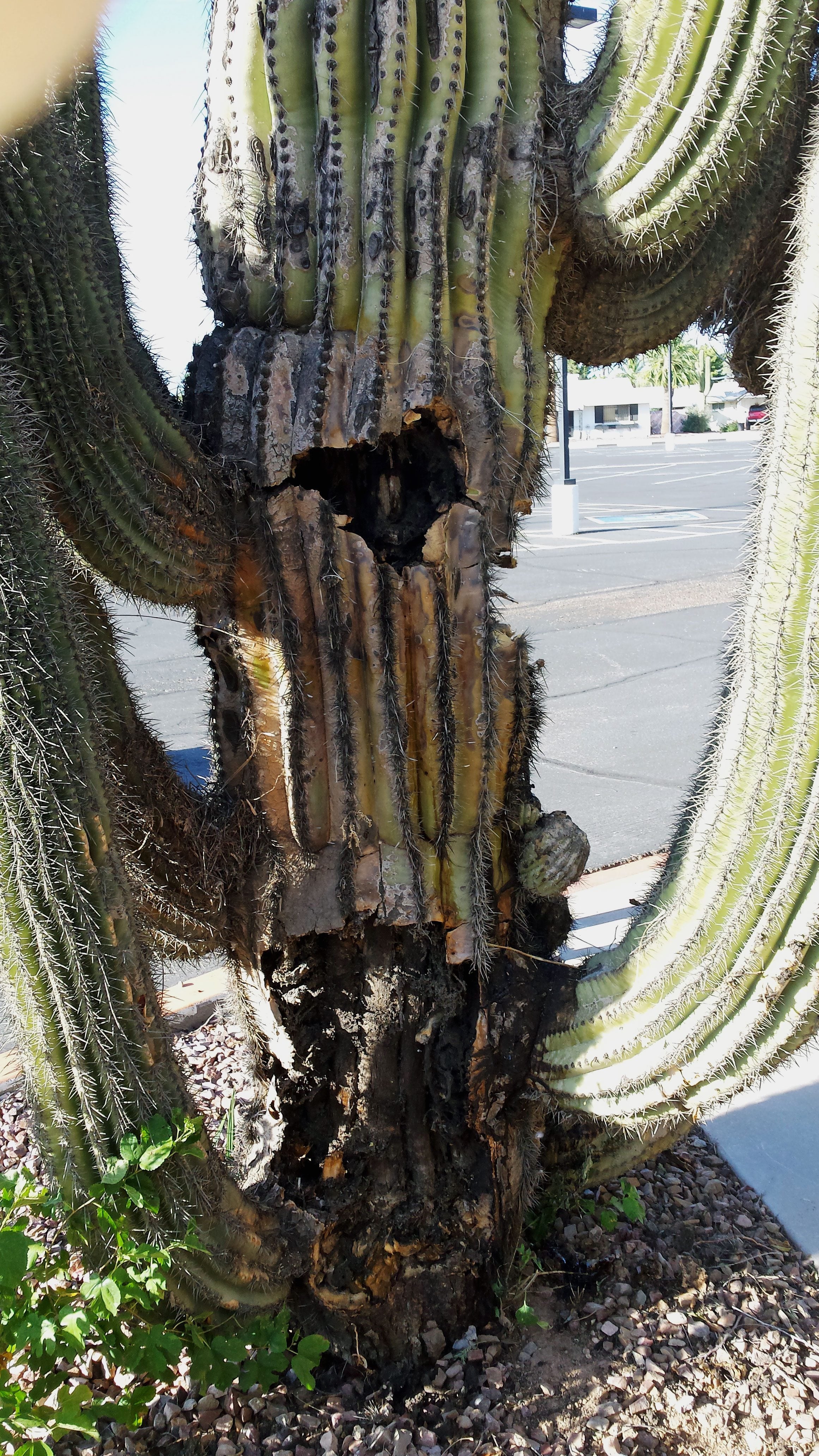Saguaro Cactus Problems – Treating Bacterial Necrosis In Saguaro


Saguaro is one of the most stately and statuesque of the cacti. They also fall prey to a nasty infection called bacterial necrosis of saguaro. What is bacterial necrosis? If you know what necrosis is, you can tell by the name that this disease is very simply a condition that rots the tissues of the plant. It is a smelly, potentially life-threatening disease with some difficult control practices. The importance of detecting and beginning treatment cannot be stressed, as the plant can live for some time with small spots of the disease but will eventually succumb if left untreated.
What is Bacterial Necrosis?
Saguaro cactus can live for 200 years and grow up to 60 feet (18 m.) in height. These monstrous desert dwellers look imposing and impervious but can actually be brought down by a tiny bacterium. Saguaro cactus necrosis can invade the plant in a number of ways. It eventually creates necrotic pockets in the flesh which will spread. These necrotic areas are dead plant tissue and, if left unchecked, can eventually kill these regal plants. Treating bacterial necrosis in saguaro in the early stages can give the plant an 80 percent chance of survival. Saguaro cactus problems are rare, as these prickly giants have developed methods of protection from predators and are remarkably adaptable to a variety of unfavorable conditions. Saguaro cactus necrosis starts out as dark spots in the flesh, which are soft and smelly. Eventually, the disease progresses to rotten lesions that exude dark, smelly fluid. Saguaro cactus necrosis may also develop into a corky patch where the plant is trying to heal itself. Any breach of the corked area will release the bacteria and infect more of the plant. The villain is a bacteria called Erwinia. It can get into the plant from any injury and even from a moth's feeding activities. The bacteria also survives in the soil until it finds a victim.
Treating Bacterial Necrosis in Saguaro
Bacterial necrosis of saguaro treatment is mostly manual, as there are no approved chemicals to combat the bacteria. The infected material needs to be removed from the plant and the area cleaned to prevent the spread of the disease. Infected material must be destroyed and not added to the compost bin. Immediately doing "surgery" on your plant may or may not save it, however, as the bacteria live in the soil or in dead plant matter on the ground. Any future injury or even the tunneling of larvae into the plant will leave it open to re-infection. You should treat the process just like surgery and prepare by sterilizing all tools you will use and arming yourself with some heavy gloves to prevent getting stuck by the plant's spines. Saguaro cactus problems from bacterial necrosis begin with open, oozing wounds. You will need a sharp, clean knife to cut out the area. Excise at least ½ inch (1 cm.) of the surrounding healthy tissue as well. As you cut, dip the knife into a 1:9 ratio solution of bleach and water to sanitize between cuts. As you make your cuts, angle them so any water will drain out of the cactus. Rinse the hole you have made with the bleach solution to kill any remaining pathogens. The hole needs to remain open to the air to dry out and callus naturally. In most instances, the cactus will be fine provided the bacteria is not re-introduced. In rare cases, a cactus has been entirely girdled by the disease and, sadly, the plant needs to be removed and destroyed. This usually only happens on large plantations or in the wild where the keen eye of the gardener is not aware of potential problems.
Sign up for the Gardening Know How newsletter today and receive a free copy of our e-book "How to Grow Delicious Tomatoes".

Bonnie Grant is a professional landscaper with a Certification in Urban Gardening. She has been gardening and writing for 15 years. A former professional chef, she has a passion for edible landscaping.